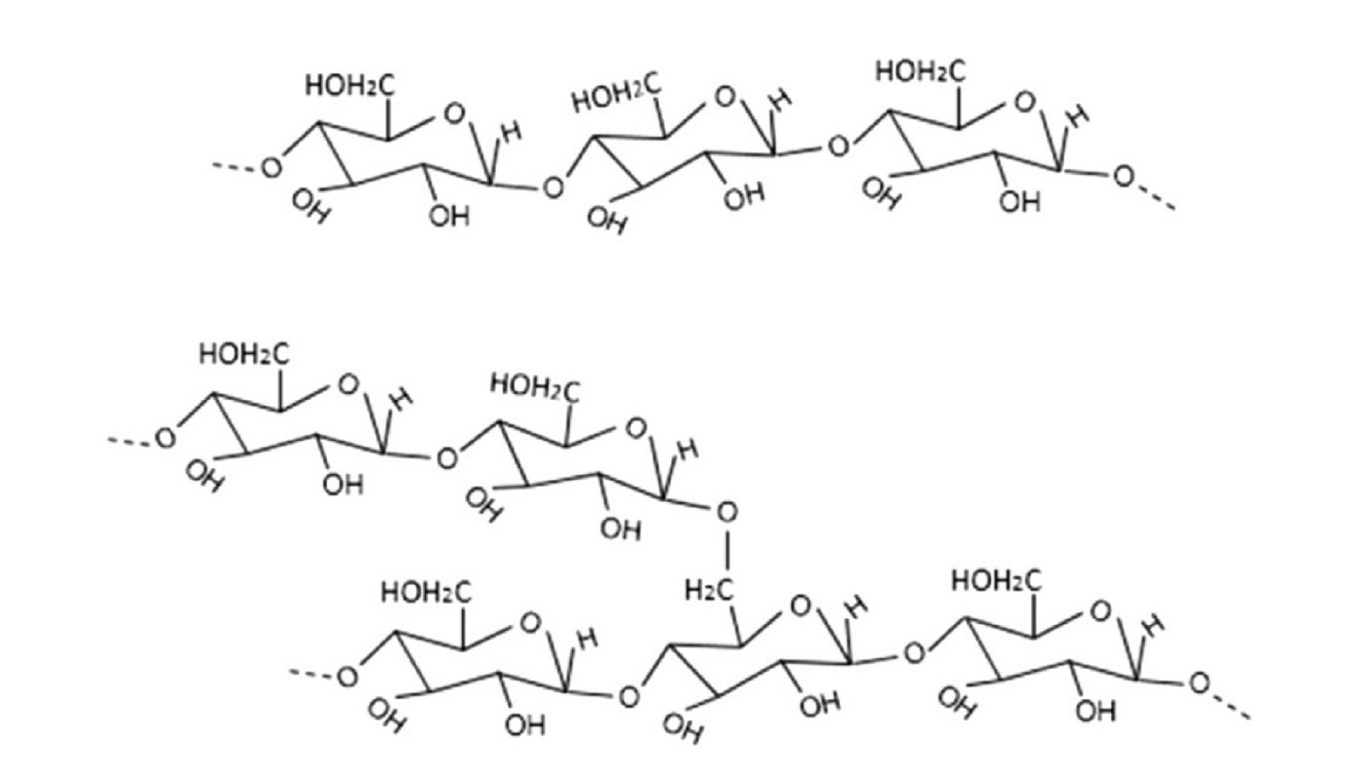Starch is a natural polymeric carbohydrate consisting of glycosidic bond-linked glucose units. Depending on its botanical source, the size, the shape, and the morphology of starch semicrystalline particles are different. Natural starch is cheap and recyclable. It is a raw material for many products in food industrial production. There are two main types of starch polymers: amylopectin and amylose. The ratio of amylose to amylopectin in starch varies due to the botanical origin.
The molecular weight of starch is high, and the intramolecular hydrogen bonds make it difficult for starch to dissolve in most solvents. The literature has reported that only dimethyl sulfoxide (DMSO), 4-methylmorpholine 4-oxide (NMMO), and ionic liquids are able to effectively dissolve starch, of which the most soluble and cheapest is DMSO. To expand the applications of starch, it is necessary to chemically modify the raw starch to improve its hydrophobicity, film-forming properties, and tensile resistance.
When the amylose helices are dissolved in a mixture of water and DMSO, the starch maintains a random coil conformation. Therefore, DMSO and DMSO/water mixture are applied to dissolve starch for the electrospinning.
A study has analyzed the quantitative relationship between fiber diameter and electrospinning parameters, such as concentration, applied high voltage, spinning distance, and flow rate. According to the response surface analysis, starch concentration has the greatest impact on fiber diameter. The ratios of both the voltage to distance and the polymer concentration to distance are essential to predict the fiber diameter.
Under ambient conditions, DMSO does not evaporate sufficiently, so DMSO-dissolved starch solutions fail to deposit on the grounded collector. Wet electrospinning, a modified electrospinning setup, is designed to overcome this problem. Starch is added to a 95% DMSO aqueous solution to form a 15% (w/w) polymer solution. The average diameter of starch fibers by wet electrospinning is on the micrometer scale. To improve the water stability and crystallinity of starch fibers, they are placed into a 50% (v/v) ethanol aqueous solution and then heated at 70℃ for 1h as post spinning treatments. Afterward, the fibers are immersed into a 25% (v/v) glutaraldehyde (GTA) aqueous solution to crosslink.


